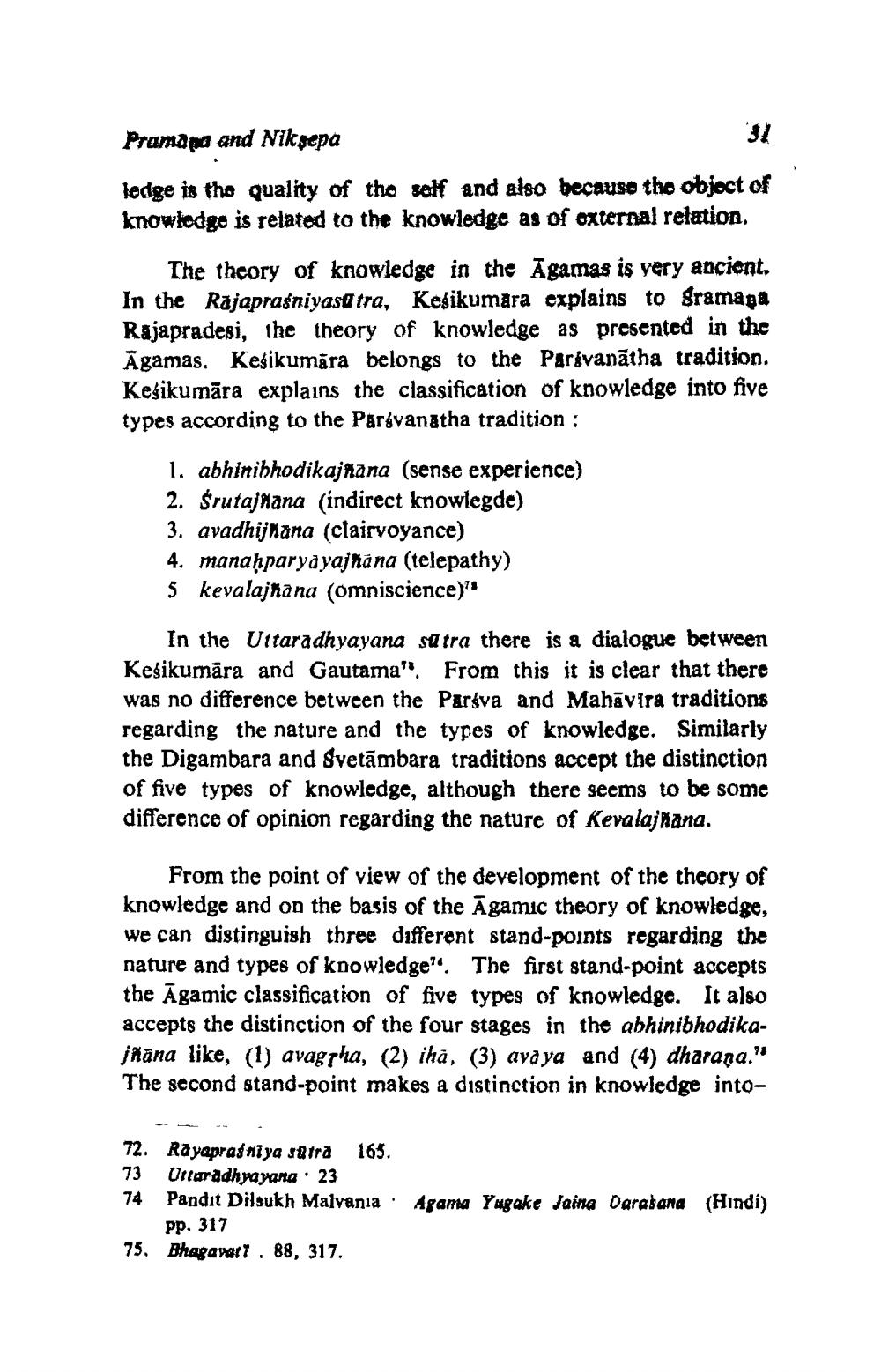________________
Pramana and Nikṣepa
31
ledge is the quality of the self and also because the object of knowledge is related to the knowledge as of external relation.
The theory of knowledge in the Agamas is very ancient. In the Rajapraśniyas@tra, Keśikumara explains to gramapa Rajapradesi, the theory of knowledge as presented in the Agamas. Kesikumara belongs to the Parivanatha tradition. Kesikumāra explains the classification of knowledge into five types according to the Parávanatha tradition :
1. abhinibhodikajñana (sense experience) 2. Śrutajnana (indirect knowlegde)
3. avadhijnana (clairvoyance)
4. manaḥparyayajnana (telepathy) 5 kevalajħana (omniscience)"
In the Uttaradhyayana sutra there is a dialogue between Keśikumāra and Gautama". From this it is clear that there was no difference between the Parsva and Mahavira traditions regarding the nature and the types of knowledge. Similarly the Digambara and Svetambara traditions accept the distinction of five types of knowledge, although there seems to be some difference of opinion regarding the nature of Kevalajnana.
From the point of view of the development of the theory of knowledge and on the basis of the Agamic theory of knowledge, we can distinguish three different stand-points regarding the nature and types of knowledge". The first stand-point accepts the Agamic classification of five types of knowledge. It also accepts the distinction of the four stages in the abhinibhodikajñāna like, (1) avagṛha, (2) ihā, (3) avaya and (4) dharaṇa.” The second stand-point makes a distinction in knowledge into
72. Rayapradniya sutra
73
74
165.
Uttaradhyayana· 23
Pandit Dilsukh Malvania Agama Yugake Jaina Darasana (Hindi)
pp. 317
75. Bhagavart. 88, 317.




